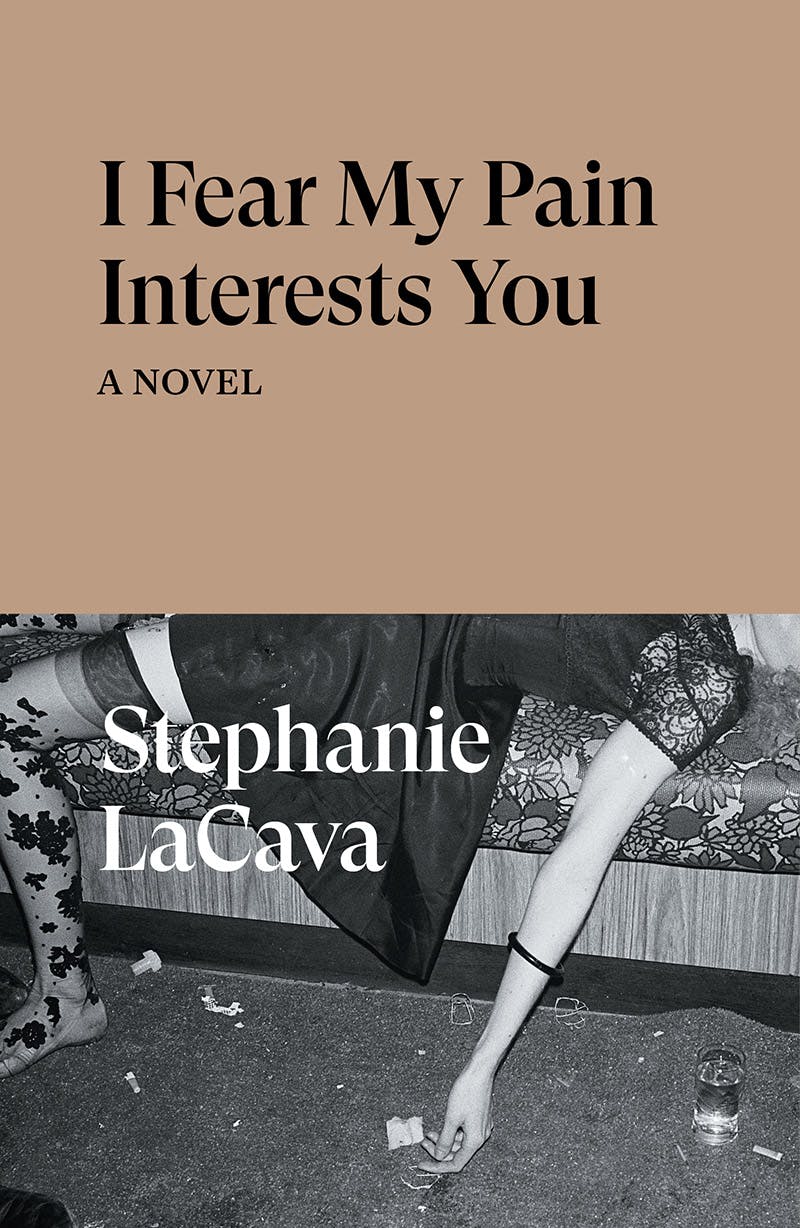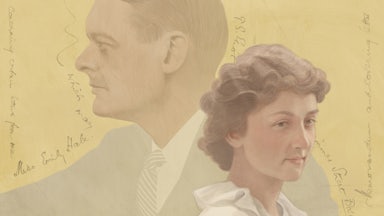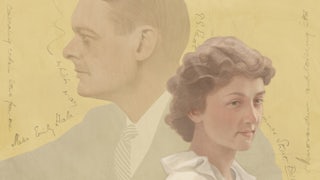David Cronenberg’s Crimes of the Future is set in a world in which the presence of pain in a movie or a novel would immediately mark it out as a period drama. It is also set in a world in which, to quote a worker from its shadowy National Organ Registry, being a performance artist is what “everybody” wants to do. The year is indeterminate, but something unspecified has accelerated human evolution to the point that pain and bodily infection, formerly unpleasant but entirely necessary harbingers of danger, have been more or less eradicated. As a result, injury has become a casual hobby, and those who have finessed it into an art form are rewarded with the greatest prize of all: celebrity and adulation.

On the surface, Cronenberg’s film is a gloomy and portentous satire—of the art world; of the lengths that some people will go to for the sake of being famous; of the way that new kinks and extremities spread, virus-like, in an increasingly shockproof, jaded culture. It is, however, an infinitely more interesting movie if it’s read as a black comedy, and this interpretation is made easier by Kristen Stewart, who puts in some of the funniest work of her career as the oily and obsequious Organ Registry employee Timlin. Watching with a wide-eyed, slavering hunger as Saul Tenser (Viggo Mortensen), one of the performance artists “everyone” desires to be, is sliced open at an art show by his partner in both love and work, Caprice (Léa Seydoux), Timlin is the rare woman to embody that traditionally male cinematic stereotype—a poindexter with a taste for the perverse. “The surgery,” she whines to Tenser after the performance, almost licking her lips. “It’s sex, isn’t it?” “Is it?” Tenser asks her, amused by her obvious arousal. “Yes,” she whispers, leaning in a little too close, “surgery is the new sex.”
I thought about Timlin when reading I Fear My Pain Interests You, a cool, cutthroat razor of a novel by the author and memoirist Stephanie LaCava that is also, at least partly, a satire about the hurt inflicted by the culture industry. The book’s heroine, Margot Highsmith, is the daughter of two famous punk musicians, raised in bohemian chaos and steeped in celebrity from birth. Margot has a congenital inability to feel pain, a characteristic that combined with her parents’ busy inattentiveness to leave her bruised and bleeding as a child. As a young woman, she has developed a numb and listless affect that attracts older and unscrupulous men. Enter “Graves,” who meets Margot in a graveyard and is instantly, worryingly bewitched by how freely and painlessly she bleeds after a cycling accident, insisting on driving her to the hospital and “casing” her with his eyes as if the scene is “an audition.” “It was an epic seduction,” Margot thinks to herself, drily. “He was already telling me what to do.”
Why, I wondered after finishing I Fear My Pain Interests You for the second time, had two works of fiction arrived simultaneously in the public consciousness that dealt with the idea of painlessness, either on an individual or collective basis? The obvious answer—the pandemic, with its death toll and its constantly mutating sickness—did not quite fit, as Cronenberg professed to have been toying with the screenplay for Crimes of the Future since 2003. Between 2020 and 2021, in a fog of agony and weakness ushered in by a pre-vaccine hit of Covid, I myself had written a slim book of criticism about pain, and although the text took shape while I was suffering physically, the impetus to write the thing had solidified months before I caught the virus.
Obviously, something else was in the air. Perhaps it was the slow drip of bad news seeming to turn into a torrent, making numbness appear suddenly attractive; maybe it had something to do with a strange new current of conservatism in the media and in politics, forcing a return to a particularly old-school form of provocation. If you prick us, both Crimes of the Future and I Fear My Pain Interests You seem to ask the audience, do we not bleed, whether or not the bleeding hurts?
Like Saul Tenser’s lover and collaborator Caprice in Crimes of the Future, Graves turns out to be a former trauma surgeon; like Timlin, he is thoroughly entranced by the idea of injury without pain, and that entrancement soon manifests itself as a form of sexual attraction. Both Cronenberg and LaCava ask us to consider the potential appeal of a lover who cannot be hurt, and LaCava, in particular, also suggests that we think about who exactly might be looking for a partner of this kind.
Tenser and Caprice share a tender and respectful relationship, in which neither party feels pain. Because Margot is an outlier, a “freak,” and because she is a girl, her talent for self-injury marks her out as an obvious target for the kind of men who hunt the weakest in the herd. It does not take long for Graves, who seems as interested in penetrating her mind with his superior masculine intellect as he does her body with his penis, to begin proposing sexualized “experiments.” “I wonder if we could play with how [your condition] affects arousal? I’m just thinking out loud,” he says, the suggestion humorously casual as if he were floating the idea of a role-playing fantasy, or the use of a different orifice. “Did you know that deliberately inflicted pain hurts more?”
“I’m not very good at the old sex,” Saul Tenser sighs apologetically, clearing his throat, when Timlin finally tries to kiss him. Neither Graves nor Margot seems particularly good at it, either, with Margot dissociating when it happens and Graves refusing to orgasm in order to prevent his body from producing any bonding hormones. As with Crimes of the Future, I Fear My Pain Interests You is, in places, an acerbic comedy so pitch-black barely any light escapes. In spite of her medical condition, Margot briefly develops an addiction to painkillers, perhaps because this seems like the kind of thing a famous couple’s daughter ought to do; when she and Graves watch Peppermint Frappé, a thriller from the 1960s, he informs her with a straight face and no evident self-awareness that the film’s protagonist “is a bourgeois doctor with ‘ideas’ about a female-object.” “It’s surprising you can orgasm,” he informs her with “full detachment” after sex, hardly sounding a million miles away from any number of men one could meet on Tinder.
As a child, Margot’s grandmother tells her a serialized bedtime story about “a happy, blonde girl who was so beautiful that people told her right from the start she would be a star.” “With every subsequent telling, every time I stayed over, the story darkened,” Margot recalls. “By the time I was eleven, and ready to be done with hearing about her, the girl wound up in an institution.” That Margot grows up to be an actress after hearing this at such a formative age is another testament to her insensitivity to the things that hurt. Who is better suited to life as a famous thespian than somebody who cannot feel the slings and arrows of outrageous fortune, even when they make her bleed?
Early in the novel, LaCava includes a striking scene in which the teenage Margot, hoping to jump-start her body’s nervous system, grabs hold of an electric fence and has a momentary out-of-body experience while surrounded by a herd, or “flink,” of cows. No pain comes; her catharsis is denied. She confesses to being drawn to cattle for mysterious reasons, and it seems reasonable to think that it might be because they share her soft passivity, her natural-born status as prey. LaCava frequently draws attention to the fact that Margot wears a choker, an interesting choice of jewelry because of its links to bondage but also because it brings to mind the famous children’s story The Green Ribbon, in which the titular accessory is the only thing that keeps a woman from quite literally losing her head.
In Dead Ringers, an earlier film by David Cronenberg about twin gynaecologists, a troubled and vulnerable actress talks about the usefulness of pain with her physician, with whom she has just had sex. “Pain,” he tells her, “creates character distortion.” Character distortion is a useful thing for a screenwriter or a novelist hoping to create a subject with a realistic inner life, and without it they run the risk of creating a protagonist who feels two-dimensional. “Let us, like professors of literature, search for the meaning that lies locked in the poem,” Caprice announces as she prepares to cut into Tenser for another surgical performance in Crimes of the Future.
The film itself, by contrast, never really cuts that deeply into Tenser as a man, and although some critics have interpreted this as a failing, it seems to me to be an intentional demonstration of the degree to which physical insensitivity might also dull a person’s sense of self. Margot, likewise, is at times so closed-down that she verges on a state of catatonia, her malaise too obviously conceptual as a literary device to be the kind depicted in what are now called, in marketing-speak, Sad Girl Novels. When she fails to adequately dress her wounds, or when she fails to notice them and runs the risk of bleeding out, there is something nihilistic about her deliberate inattention to her body, as if she is seeking to rebel against the fact of having flesh at all.
The chill, in both instances, is the point. It is also the source of some of the most mordant humour, the dissonance between the physical brutality visited on these characters and their cool attitudes mirroring, albeit perversely, the detachment common to both trauma victims and the kind of aloof people who excel in both the music and the art worlds. LaCava’s previous novel made similar use of a heroine who was passive to the point of self-endangerment, and its heroine, Mathilde, worked in the arts too. That book ended with a sexual assault, looping back onto itself as if to suggest an inescapable pattern. Here, we are left with something more ambiguous, an act of violation and then a concluding line that I interpreted entirely differently each time I read the novel, neither option feeling like a happy ending.
In a curious way, the book, in spite of its absence of pain, is a paean to sensation, its usefulness and its vividness. “Someone said to me, ‘you know how they have feel-good books? You write feel-bad books,’” LaCava noted in an interview with Dazed in October. “‘But that doesn’t make you not want to read them.’” Part of what is often perceived as being hot about pain in a sexual context is nearness to pleasure—in extremity of feeling, in its psychologically affecting properties. The absence of pain in the aftermath of injury, when agony finally fades, can be extremely pleasurable too. This is, I think, the kind of feel-bad, must-read urge the person talking to LaCava meant: a kind of calm after the bloodletting, a compress on the psychic wound, reminding us that we’re alive.






